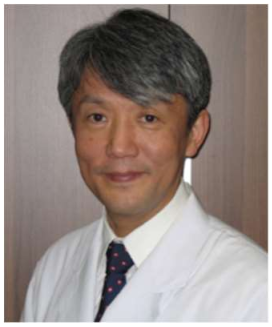Prof. Dr. Hideki Kasuya Appointed Editor-in-Chief of International Medical Education
We are pleased to announce that Prof. Dr. Hideki Kasuya has been appointed Editor-in-Chief of International Medical Education (IME, ISSN 2813-141X). We look forward to his contributions to the continued success of the journal.
|
|
Name: Prof. Dr. Hideki Kasuya |
Prof. Dr. Hideki Kasuya M.D., Ph.D., FACS is a Professor of international medical education at Nagoya University Graduate School of Medicine and is also a Vice Dean of the school, a Director of the Cancer Immunotherapy Research Center, and the President of Onco Immune Therapeutics Inc. He also established Japan’s first Joint Degree Program and was a Senior Fellow at MGH, Harvard Medical School from 2000 to 2003. He is a counselor at the Japanese Society of Gene and Cell Therapy.
The following is a short Q&A with Prof. Dr. Hideki Kasuya, who shared his vision for the journal with us, as well as his views of the research area and Open Access publishing:
1. What appealed to you about the journal that made you want to take the role as its Editor-in-Chief?
International Medical Education (IME) is a new Open Access publication in this area that I believe will reflect the changing topics in medical education and will appeal to international researchers working on cutting-edge issues. In my opinion, many quality messages are rejected due to the limited number of medical education publications, the limited space available, and the poor English language skills of some authors. IME will allow medical, dental, and nursing educators worldwide to share educational ideas and developments. The IME hopes to help rectify this situation by providing a useful forum for medical, dental, and nursing educators around the world to share educational ideas and developments.
2. What is your vision for the journal?
The journal's concentration will be on medical and clinical education in the health professions, as defined in the 'aims and scope' section. Nonetheless, higher education is becoming more globalized, with students traveling from all over the world to pursue their desired courses, and institutions of higher education actively seeking out international students. Furthermore, the evidence is required to verify that teaching, learning, and evaluation approaches are appropriate for this international audience. As a result, I am especially interested in articles that look at how different cultural and multicultural situations affect teaching and learning in medicine and the health sciences around the world. Topics like problem-based learning, strategies for internationalization of medical school curriculum, popularization of joint degree program/double degree programs, development of joint courses and joint lectures with universities abroad, online courses, and teaching are just some of the highlights of our journal. Medical education and practice is primarily a multicultural and multiethnic activity, with students and doctors from various countries and cultures studying and working together in many medical schools and hospitals around the world.
3. What does the future of this field of research look like?
I wish to encourage additional authors to share their work with the international medical education community and their related health professions in order to develop this global perspective. We want to facilitate the interchange of ideas and experiences that come from the various cultures in which medical education is practiced around the world. This could help to bring medical education ideas closer to international standards. In this developing profession, the need for communication, collaboration, and education necessitates the establishment of a new forum dedicated to internationalized medical education in all of its forms.
4. What do you think of the development of Open Access in the publishing field?
The Open Access research paradigm is relatively new and is associated with the widespread use of communication technologies such as the internet. The benefit of Open Access publications is related to the increased number of readers and citations for the researcher. For example, if one wanted to publish with a traditional publisher, it would be difficult to find readers unless they were affiliated with an organization that would pay their subscription fees. Furthermore, if someone wants to purchase subscriptions for several journals, it can be a significant financial burden. The exposure effect, something which is brought on by Open Access research, is also significant. For example, the more people have access to your findings, the more people will like and appreciate said findings, and the more exposure one has, the more citations one will achieve in any written work they produce.
A special message from the Editor-in-Chief
During this festive season, I would like to take the time to sincerely thank our reviewers, authors, readers, section editors, associate editors, and staff members. We appreciate your dedication and efforts to advancing medical education here at IME. In addition to wishing you a very happy new year and success in 2023, I sincerely want to continue receiving your support in the upcoming year.
Even though IME is a brand-new journal, it expands swiftly. We cordially encourage you to submit your next excellent manuscript to our publication. Currently, the Editorial Board is being updated and we're looking for specialists that are capable, sincere, and responsible to join our team. We truly appreciate your active involvement and assistance, and your feedback and suggestions are welcome.
Happy holidays and best wishes for a prosperous 2023!
